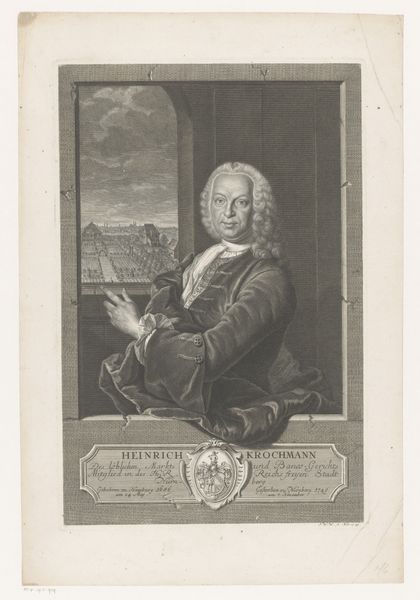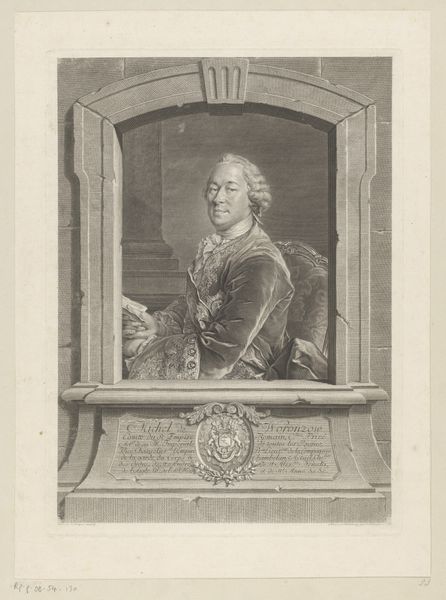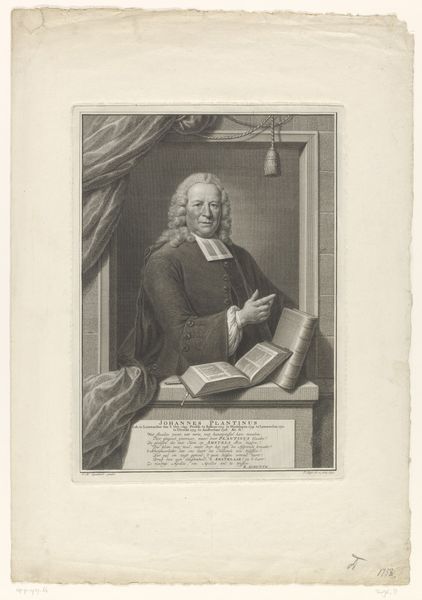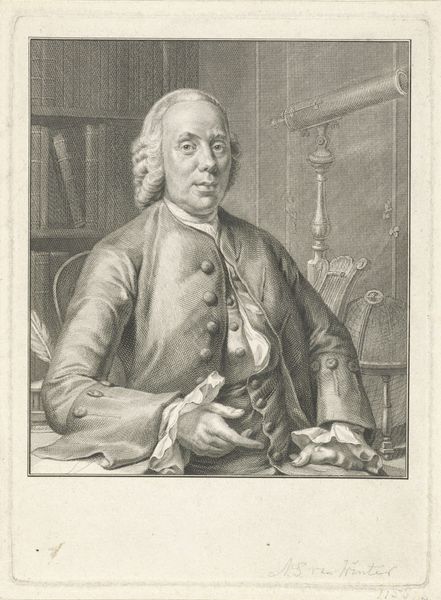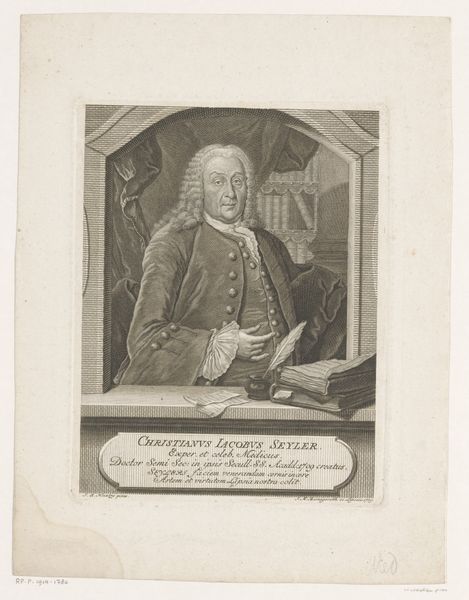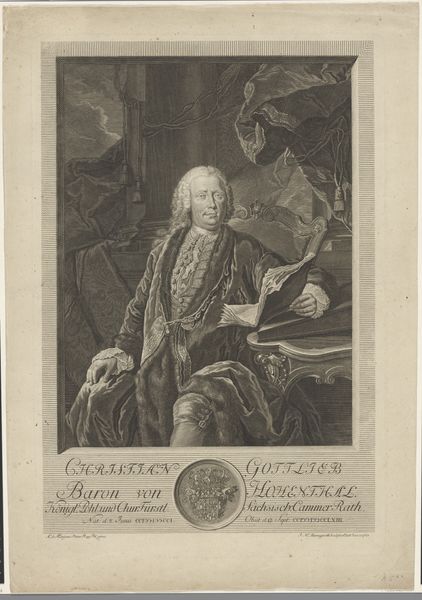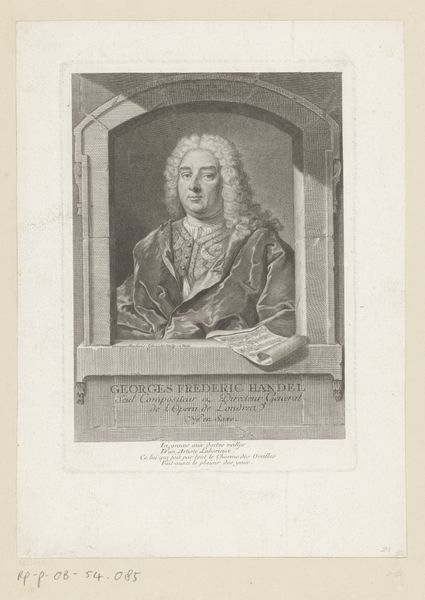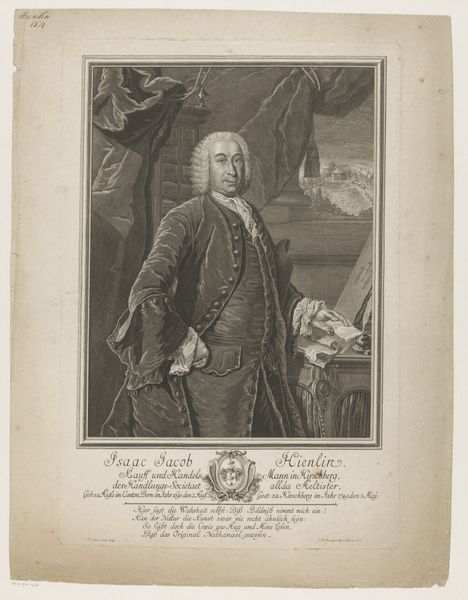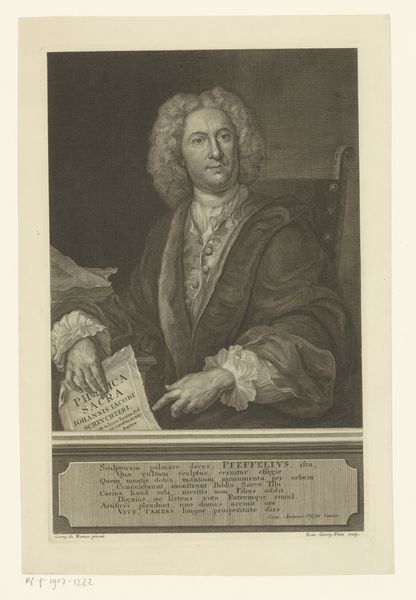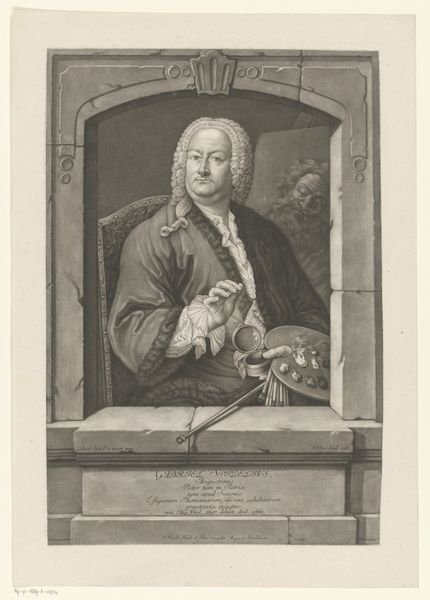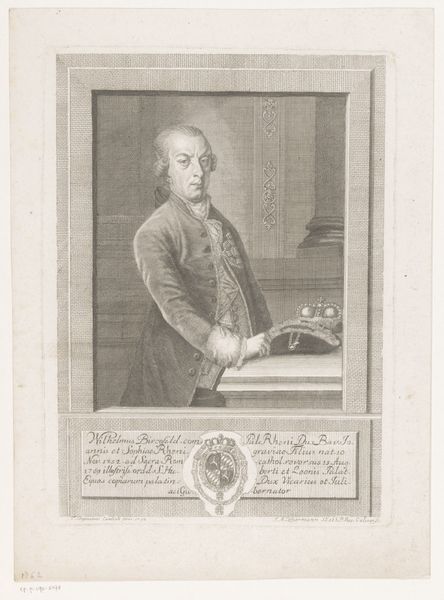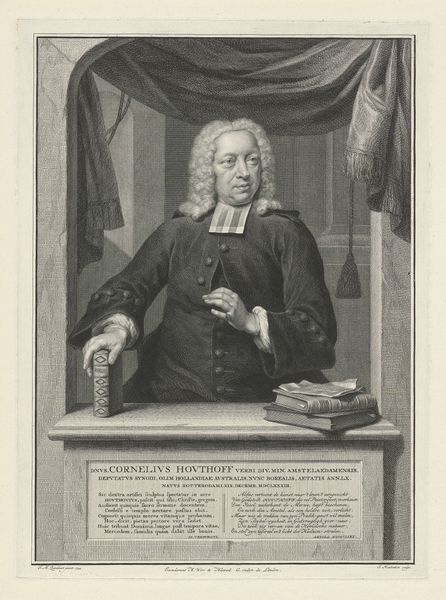
Dimensions: height 383 mm, width 270 mm
Copyright: Rijks Museum: Open Domain
Curator: Looking at this engraving, I'm immediately struck by the intensity of the gaze. The subject seems both intellectual and supremely self-assured. Editor: Indeed. What we're observing is "Portret van James Mounsey" etched by Georg Friedrich Schmidt around 1762. It’s now part of the Rijksmuseum collection. Mounsey, you see, was a prominent physician; this image really exemplifies the relationship between image-making, power, and social status. Curator: Exactly. Considering its creation during the Enlightenment, one can't help but analyze this piece within a framework of evolving social hierarchies and identity politics. Look at the book he’s holding—it’s practically flaunting its text toward the viewer! The gesture, paired with the almost severe expression, speaks volumes about class, education, and assumed authority. Editor: His profession undoubtedly dictated much of its reception. Images like these helped build and solidify a doctor's reputation in society. That’s especially noticeable with the inclusion of scholarly tools such as books, globes, and drapery; Schmidt positions Mounsey among other esteemed academics. These symbols amplified the importance and trustworthiness of individuals working within these fields. Curator: Absolutely. It's tempting to view this portrait as merely representational, but it’s inherently an active construction. The portrait plays into societal perceptions of 18th-century male elites. Do we view him as simply a man with medical knowledge, or as an influential individual operating in service of maintaining certain social orders? How complicit are such portraits within systemic structures? Editor: That’s astute. Even the baroque-style elements enhance Mounsey’s public persona. Consider that while baroque extravagance had begun waning, its association with established power remained strong. And the visual tension—Schmidt has skillfully rendered detailed surfaces versus plain backgrounds—places further emphasis squarely on our physician. Curator: For me, that visual emphasis really amplifies questions regarding who is allowed into such constructed depictions of "greatness" and how did they function socially at the time of production? I do think these kind of critical explorations helps us dismantle older hierarchies within our art appreciation now. Editor: And understanding this engraving’s social role helps us better appreciate its artistic craft and lasting influence within broader image politics today.
Comments
No comments
Be the first to comment and join the conversation on the ultimate creative platform.
